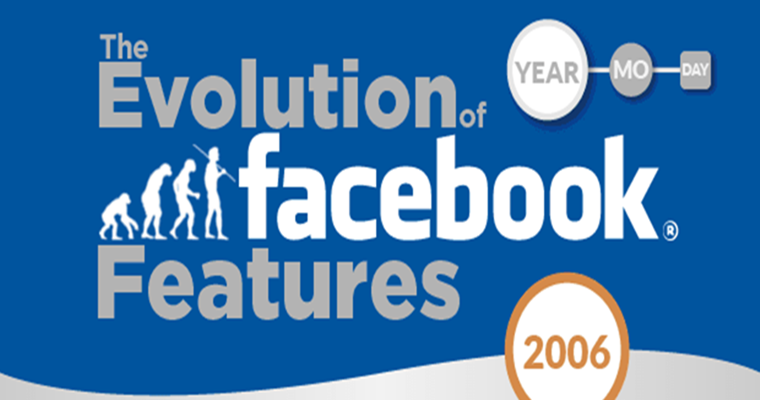
Facebook is a social network service website launched on February 4, 2004. This is a list of software and technology features that can be found on the Facebook website and are available to users of the social media site.The news feed is the primary system through which users are exposed to content posted on the network. Using a secret method (initially known as EdgeRank), Facebook selects a handful updates to actually show users every time they visit their feed, out of an average of 1500 updates they can potentially receive.
On September 6, 2006, Ruchi Sanghvi announced a new home page feature called News Feed. Originally, when users logged into Facebook, they were presented with a customizable version of their own profile. The new layout, by contrast, created an alternative home page in which users saw a constantly updated list of their friends' Facebook activity. News Feed highlights information that includes profile changes, upcoming events, and birthdays, among other updates. This has enabled spammers and other users to manipulate these features by creating illegitimate events or posting fake birthdays to attract attention to their profile or cause. News Feed also shows conversations taking place between the walls of a user's friends. An integral part of the News Feed interface is the Mini Feed, a news stream on the user's profile page that shows updates about that user. Unlike in the News Feed, the user can delete events from the Mini Feed after they appear so that they are no longer visible to profile visitors. In 2011 Facebook updated the News Feed to show top stories and most recent stories in one feed, and the option to highlight stories to make them top stories, as well as to un-highlight stories. In response to users' criticism, Facebook later updated the News Feed to allow users to view recent stories first.Initially, the addition of the News Feed caused some discontent among Facebook users. Many users complained that the News Feed was too cluttered with excess information. Others were concerned that the News Feed made it too easy for other people to track activities like changes in relationship status, events, and conversations with other users. This tracking is often casually referred to as "Facebook-Stalking". In response to this dissatisfaction, creator Mark Zuckerberg issued an apology for the site's failure to include appropriate customizable privacy features. Thereafter, users were able to control what types of information were shared automatically with friends. Currently, users may prevent friends from seeing updates about several types of especially private activities, although other events are not customizable in this way.With the introduction of the "New Facebook" in early February 2010 came a complete redesign of the pages, several new features and changes to News Feeds. On their personal Feeds (now integrated with Walls), users were given the option of removing updates from any application as well as choosing the size they show up on the page. Furthermore, the community feed (containing recent actions by the user's friends) contained options to instantly select whether to hear more or less about certain friends or applications.
Friends
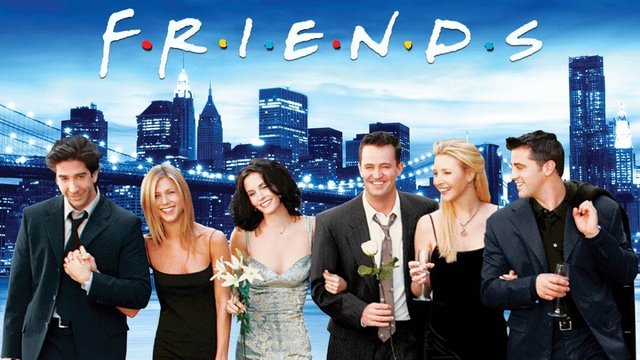
Friending" someone is the act of sending another user a friend request on Facebook. The two people are Facebook friends once the receiving party accepts the friend request. In addition to accepting the request, the user has the option of declining the friend request or hiding it using the "Not Now" feature. Deleting a friend request removes the request, but does allow the sender to resend it in the future. The "Not Now" feature hides the request but does not delete it, allowing the receiver to revisit the request at a later date.It is also possible to remove a user from one's friends, which is referred to as "unfriending" by Facebook.Many Facebook users also refer to the process as "de-friending."Unfriend" was New Oxford American Dictionary's word of the year in 2009.Facebook does not notify a user if they have been unfriended, but there are scripts that provide this functionality. There has also been a study on why Facebook users unfriend, which found that differences, especially between ages, and few mutual friendships were the dominant factors correlated with unfriending, all of which mirrors the decline of physical-world relationships.
Wall
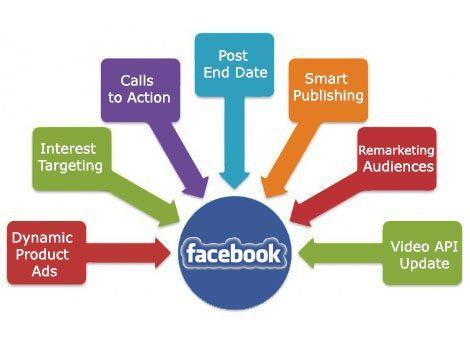
The Wall is the original profile space where Facebook users' content until December 2011 was displayed. It allowed the posting of messages, often short or temporal notes, for the user to see while displaying the time and date the message was written. A user's Wall is visible to anyone with the ability to see his or her full profile, and friends' Wall posts appear in the user's News Feed.In July 2007, Facebook allowed users to post attachments to the Wall, whereas previously the Wall was limited to text only.In May 2008, the Wall-to-Wall for each profile was limited to only 40 posts. Facebook later allowed users to insert HTML code in boxes attached to the wall via apps like Static FBML which has allowed marketers to track use of their fan pages with Google Analytics.The concept of tagging in status updates, an attempt to imitate Twitter,began September 14, 2009. This meant putting the name of a user, a brand, an event or a group in a post in such a way that it linked to the wall of the Facebook page being tagged, and made the post appear in news feeds for that page, as well as those of selected friends.This was first done using the "@" symbol followed by the person's name. Later, a numerical ID for the person could be used.Early in 2011, tagging in comments was added.
In addition to postings by other users, the Wall also displayed other events that happened to the user's profile. This included when information was changed, when they changed their profile picture, and when they connected with new people, among other things.
The Wall has been replaced by the Timeline profile layout, which was introduced in December 2011.
Timeline
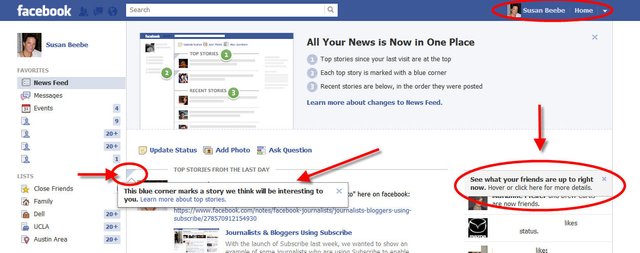
Since December 15, 2011, a Timeline is the new virtual space in which all the content of Facebook users is organized and shown.Replacing the Wall, in a Timeline the photos, videos, and posts of any given user are categorized according to the period of time in which they were uploaded or created.Posts and events are displayed along a timeline that runs through the center of the profile, with the option of adding events that occurred prior to the user joining Facebook as well as "hiding" posts.Some experts saw this as a crucial step on the use of social networks.In March 2012, Timeline became available for "Facebook pages", and by the end of the month, Facebook had forced all Facebook pages (not Profile pages) to convert to the Timeline layout, against the will of many page admins. Like the Wall, users can set Timeline privacy settings to change who can see their entire profile. Users' friends have the ability to post messages on the user's Timeline. Using Facebook on certain devices, such as iPads, may result in automatic adoption of the Timeline. In August 2012, Profile pages were forced to change to the Timeline layout.
Likes and Reactions
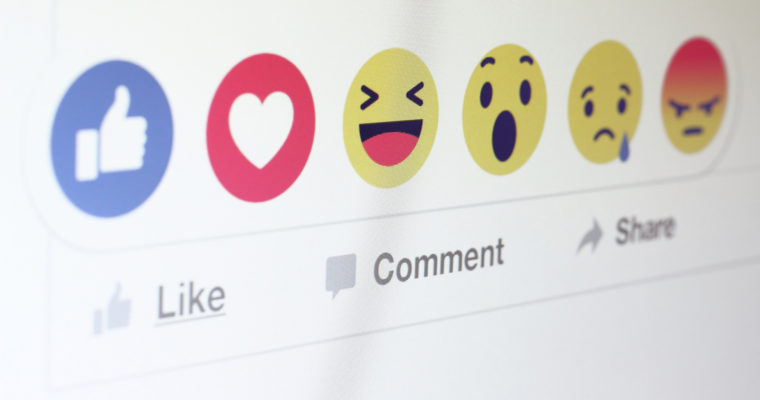
The like button, first enabled on February 9, 2009,enables users to easily interact with status updates, comments, photos, links shared by friends, vidoes and advertisements. Once clicked by a user, the designated content appears in the News Feeds of that user's friends,and the button also displays the number of other users who have liked the content, including a full or partial list of those users.The like button was extended to comments in June 2010.After extensive testing and years of questions from the public about whether it had an intention to incorporate a "Dislike" button,Facebook officially rolled out "Reactions" to users worldwide on February 24, 2016, letting users long-press on the like button for an option to use one of five pre-defined emotions, including "Love", "Haha", "Wow", "Sad", or "Angry".Initially there were reactions for 'yay' and 'confused', but were ultimately discarded during testing. Reactions were also extended to comments in May 2017.
Comments
To mark the 30th anniversary of the GIF, Facebook has introduced a new feature enabling users to add GIFs to comments. The eagerly-awaited feature can be accessed using the GIF button located beside the emoji picker. Users can choose from the available GIFs sourced from Facebook's GIF partners, but cannot upload other GIFs.
Facebook is best way of entertain as well as earning online
Downvoting a post can decrease pending rewards and make it less visible. Common reasons:
Submit
Hi! I am a robot. I just upvoted you! I found similar content that readers might be interested in:
https://en.wikipedia.org/wiki/Facebook_features
Downvoting a post can decrease pending rewards and make it less visible. Common reasons:
Submit
Facebook is best way of entertain as well as earning online
Downvoting a post can decrease pending rewards and make it less visible. Common reasons:
Submit
Facebook is best way of entertain as well as earning online
Downvoting a post can decrease pending rewards and make it less visible. Common reasons:
Submit